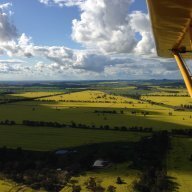My understanding is:
Scenario 1 - do the IF / competency on the GA type. Apply to CASA with photo, security check, medical and English language assessment - RPL will be issued with all RAAus endorsements. Complete a flight review and you are ready to go. If operating through controlled airspace (CTA) or into controlled aerodrome (CTR) you'll also need appropriate endorsements. If you're flying from a CTR any flying you do during IF / competency should see you with a CTR endorsement.
Scenario 2 - Apply to CASA with photo, security check, English language assessment and medical - RPL will be issued minus the Nav endorsement. (CASA don't have a pax endorsement). Do the dual flying required to become competent in the GA type and complete a flight review. (See comments in scenario 1 regarding CTA/CTR) You can now operate GA types within 25NM, you may complete the IF at you're own pace, once competent and having logged 2.0 hours (of which 1.0 hour can be in an approved simulator) you can apply to have the RPC Nav endorsement added to the RPL.
If you have any doubts, give your local CASA aviation safety advisor a call. The NSW AV Safety Advisor, Teraya Miller, is a dual qualified RAAus / GA instructor and knows her stuff.
https://www.casa.gov.au/education/standard-page/aviation-safety-advisors
If you go to a GA school who says they don't recognise RAAus training, walk away and find one who does.





